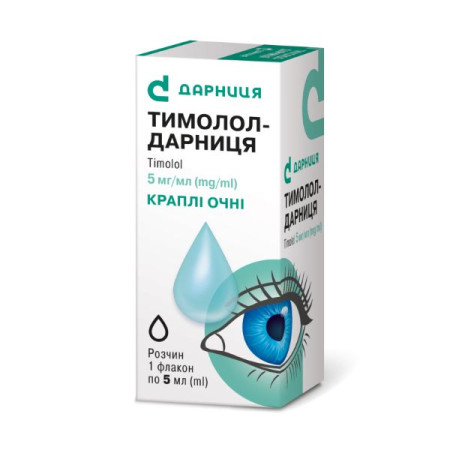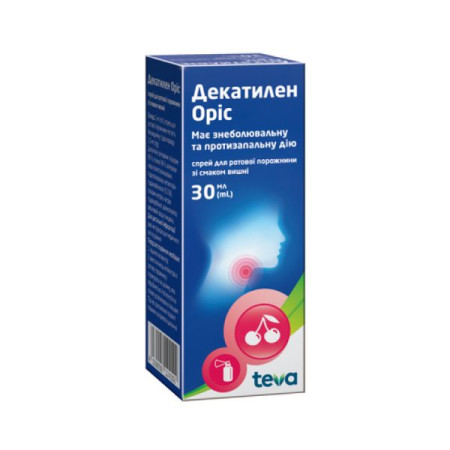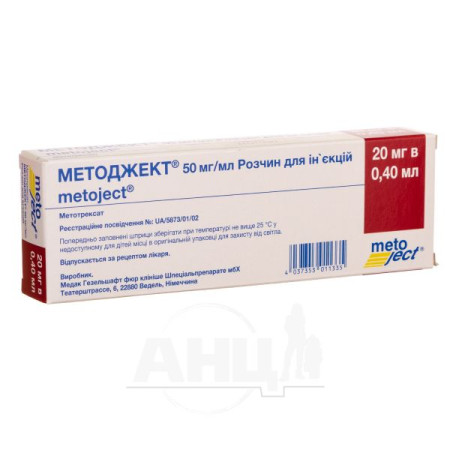Mixtard 30 NM suspension for injection 100 IU/ml bottle 10 ml No. 1

Instructions Mixtard 30 NM suspension for injection 100 IU/ml bottle 10 ml No. 1
Composition
active ingredient: human insulin (rDNA);
1 ml of suspension for injection contains 100 IU (3.5 mg) of human biosynthetic insulin, 30% soluble insulin, 70% isophane insulin crystals produced by rDNA technology in Saccharomyces cerevisiae;
1 vial contains 10 ml, which is equivalent to 1000 IU;
1 IU (international unit) is 0.035 mg of anhydrous human insulin;
Excipients: zinc chloride; glycerin; metacresol; phenol; sodium hydrogen phosphate, dihydrate; sodium hydroxide; diluted hydrochloric acid; protamine sulfate; water for injections.
Dosage form
Suspension for injection.
Main physicochemical properties: neutral, cloudy white aqueous suspension of human insulin.
Pharmacotherapeutic group
Antidiabetic drugs. Insulins and analogues for injection, intermediate and long-acting, in combination with short-acting insulin (human). ATC code A10A D01.
Pharmacological properties
Pharmacodynamics.
The blood sugar-lowering effect of insulin consists in promoting the absorption of glucose by tissues after insulin binds to receptors on muscle and fat cells, as well as in simultaneously inhibiting the release of glucose from the liver.
Mixtard® 30 NM is a dual-acting insulin.
On average, the action profile after subcutaneous injection is as follows:
onset of action – within 0.5 hour;
maximum effect occurs 2–8 hours after administration;
duration of action – up to 24 hours.
Pharmacokinetics.
The half-life of insulin from the blood is several minutes, so the action profile of an insulin drug is determined solely by its absorption characteristics.
This process depends on a number of factors (for example, the dose of insulin, the method and site of injection, the thickness of subcutaneous fat, the type of diabetes mellitus), which causes significant variability in the effect of an insulin drug both in the same and in different patients.
Absorption: The absorption profile is determined by the fact that this insulin is a mixture of insulins with rapid and prolonged absorption. Peak plasma concentrations of short-acting insulin occur within 1.5–2.5 hours after subcutaneous injection.
Distribution: No significant binding of insulin to plasma proteins has been observed, except for circulating antibodies to it (if present).
Metabolism: Human insulin is cleaved by insulin proteases or insulin-degrading enzymes and possibly by protein disulfide isomerase. It is believed that there are a number of sites at which cleavage (hydrolysis) of the human insulin molecule occurs. None of the metabolites formed after hydrolysis are active.
Elimination. The half-life of insulin is determined by the rate of absorption from the subcutaneous tissue. Therefore, the half-life (t½) indicates the rate of absorption, not the elimination (as such) of insulin from the blood plasma (the t½ of insulin from the bloodstream is only a few minutes). According to studies, t½ is 5–10 hours.
Preclinical safety data.
Preclinical safety pharmacology studies (repeated dose toxicity, genotoxicity, carcinogenicity, toxicity to reproduction and fetal development) also did not reveal any hazard from the administration of Mixtard® 30 NM to humans.
Indication
Diabetes treatment.
Contraindication
Hypoglycemia. Hypersensitivity to the active substance or to any of the excipients (see section "Composition").
Interaction with other medicinal products and other types of interactions
As is known, a number of medications affect glucose metabolism.
Medicines that may reduce insulin requirements
Oral hypoglycemic agents, monoamine oxidase inhibitors, non-selective b-blockers, angiotensin-converting enzyme inhibitors, salicylates, anabolic steroids, and sulfonamides.
Medicines that may increase insulin requirements
Oral contraceptives, thiazides, glucocorticoids, thyroid hormones, sympathomimetics, growth hormone and danazol.
Beta-blockers may mask the symptoms of hypoglycemia and slow recovery from hypoglycemia.
Octreotide/lanreotide may either decrease or increase insulin requirements.
Alcohol can enhance or weaken the blood sugar-lowering effect of insulin.
Application features
Tracking.
The name and batch of the medicinal product used should be clearly indicated to improve traceability of the biological medicinal product.
Before traveling with a change in time zones, patients should consult a doctor, as this changes the schedule of insulin injections and meals.
Hyperglycemia
In type 1 diabetes, untreated hyperglycemia leads to diabetic ketoacidosis, which is potentially fatal.
Hypoglycemia
Hypoglycemia may occur if the insulin dose is too high in relation to the insulin requirement. Do not administer if hypoglycemia occurs or is suspected.
Skipping a meal or unexpectedly exercising can lead to hypoglycemia.
Patients who have significantly improved blood glucose control with intensive insulin therapy may experience changes in the usual warning symptoms of hypoglycemia, and should be warned about this in advance. The usual warning symptoms may disappear in patients with long-standing diabetes.
Concomitant diseases, especially infections and fever, usually increase insulin requirements. Concomitant diseases of the kidneys, liver or damage to the adrenal, pituitary or thyroid glands may require a change in insulin dosage.
When a patient is transferred to another type of insulin, the symptoms of hypoglycemia may change or become less severe compared to those experienced by the patient on the previous insulin.
Skin and subcutaneous tissue disorders
Patients should be instructed to rotate injection sites to reduce the risk of lipodystrophy and cutaneous amyloidosis. There is a potential risk of delayed insulin absorption and worsening glycemic control when injected into sites with these reactions. Hypoglycemia has been reported after abrupt change of injection site to an unaffected site. Blood glucose monitoring is recommended after changing injection sites from an affected to an unaffected site and dose adjustment of antidiabetic medications is recommended.
Avoiding accidental input errors.
Patients should be instructed and always check the label on the insulin package before each injection to avoid accidental mix-ups of Mixtard® 30 NM with other insulin preparations.
Transfer from other insulins
Transferring a patient to another type or type of insulin should be done under strict medical supervision. Changes in the concentration, type (manufacturer), type, origin of insulin (human or human insulin analogue) and/or method of production (rDNA technology or animal insulin) may require a change in insulin dose. Patients transferred to Mixtard® 30 NM from another type of insulin may require an increase in the number of daily injections or a change in dosage compared to the insulin they were usually taking. The need for dose adjustment may arise both when a new drug is first introduced and during the first few weeks or months of its use.
Injection site reactions
Injection site reactions, including pain, redness, itching, hives, swelling, bruising and inflammation, may occur with any insulin therapy. Rotating the injection site within the same area may reduce or prevent these reactions. The reactions usually resolve within a few days or weeks. Rarely, injection site reactions may require discontinuation of Mixtard® 30 NM treatment.
Insulin suspensions should not be used in insulin pumps for long-term subcutaneous insulin administration.
Mixtard® 30 NM combination with pioglitazone
Cases of congestive heart failure have been reported with pioglitazone in combination with insulin, especially in patients with associated risk factors. This should be considered when prescribing pioglitazone in combination with insulin. Patients should be monitored for signs and symptoms of congestive heart failure, weight gain and oedema when these drugs are used in combination. If any deterioration in cardiac function occurs, pioglitazone should be discontinued.
Special populations
Elderly patients (≥65 years).
Mixtard® 30 NM can be used in elderly patients.
In elderly patients, glucose monitoring should be intensified and the insulin dose should be adjusted individually.
Renal and hepatic failure.
Renal and hepatic impairment may reduce insulin requirements. In patients with renal and hepatic impairment, glucose monitoring should be intensified and the insulin dose adjusted individually.
Mixtard® 30 NM contains less than 1 mmol sodium (23 mg), therefore the medicinal product can be considered as sodium-free.
Use during pregnancy or breastfeeding
Since insulin does not cross the placental barrier, there are no restrictions on treating diabetes with insulin during pregnancy.
Both hypoglycemia and hyperglycemia, which can occur with inadequate treatment of diabetes mellitus, increase the risk of congenital malformations or fetal death. Therefore, increased blood glucose control and monitoring of treatment of pregnant women with diabetes mellitus are recommended throughout pregnancy and when pregnancy is suspected.
Insulin requirements usually decrease in the first trimester of pregnancy and increase significantly in the second and third trimesters.
There are also no restrictions on the treatment of diabetes with insulin during breastfeeding, as the treatment of the mother does not pose any risk to the child. However, it may be necessary to adjust the dose and/or diet for the mother.
Fertility
Animal reproductive toxicity studies with human insulin did not reveal any adverse effects on fertility.
Ability to influence reaction speed when driving vehicles or other mechanisms
The patient's reaction and ability to concentrate may be impaired during hypoglycemia, which may become a risk factor in situations where this ability is of particular importance (for example, when driving a car or working with other mechanisms).
Patients should be advised to take precautions to prevent hypoglycemia before driving. This is especially important for patients who have reduced or absent warning signs of hypoglycemia or who experience frequent episodes of hypoglycemia. In such circumstances, the advisability of driving should be considered.
Method of administration and doses
Mixtard® 30 NM is a biphasic human insulin. It consists of a short-acting insulin and a long-acting insulin. Biphasic insulin preparations are usually administered 1 or 2 times a day when a rapid initial effect with a subsequent longer-lasting effect is required.
Dosage.
The potency of human insulin is expressed in international units (IU).
The dosage of insulin is individual and is determined by the doctor according to the patient's needs.
The individual insulin requirement is usually 0.3 to 1.0 IU/kg/day. The daily insulin requirement may increase in patients with insulin resistance (e.g., during puberty or obesity) and decrease in patients with residual endogenous insulin production.
The injection should be given 30 minutes before a main or additional meal containing carbohydrates.
Dose adjustment.
Concomitant diseases, especially infections and fever, usually increase the patient's insulin requirements. Concomitant diseases of the kidneys, liver, or damage to the adrenal, pituitary, or thyroid glands require changes in insulin dosage.
Dose adjustment may also be necessary when patients increase their physical activity or change their usual diet or comorbidities. Dose adjustment may also be necessary when transferring patients to other insulin preparations.
Introduction.
Mixtard® 30 NM is for subcutaneous injection only. Insulin suspension should never be administered intravenously.
Mixtard® 30 NM should usually be administered by subcutaneous injection in the thigh, anterior abdominal wall, buttocks or deltoid muscle of the shoulder. In order to reduce the risk of lipodystrophy and cutaneous amyloidosis, injection sites should always be rotated within the same area.
Injecting into a retracted skin fold significantly reduces the risk of getting into the muscle.
With subcutaneous injections into the anterior abdominal wall, insulin absorption occurs faster than when injected into other areas of the body.
The duration of action depends on the dose, site of administration, temperature, and level of physical activity.
After injection, the needle should remain under the skin for at least 6 seconds. This will ensure that the full dose is administered.
Mixtard® 30 NM in vials should be administered with special insulin syringes that have the appropriate graduations.
Patients are advised to dispose of the needle and syringe after each injection.
Precautions for handling and disposal.
When first used, after Mixtard® 30 NM has been removed from the refrigerator, it is recommended to warm the vial to room temperature before mixing the suspension.
Do not use the medicine if you notice that the suspension does not look uniformly white and cloudy after mixing.
Do not use after freezing.
The patient should be advised to dispose of the needle and syringe after each injection.
Any unused medicinal product or waste material should be disposed of in accordance with local requirements.
Needles and syringes with Mixtard® 30 NM are intended for individual use only.
Children
Mixtard® 30 NM can be used in children and adolescents.
Overdose
Although there is no specific concept of overdose for insulin, hypoglycemia may develop in successive stages after its administration if doses that are too high compared to the patient's needs are used.
Mild hypoglycemia can be treated with oral glucose or sugary foods. Therefore, diabetics are advised to carry several sugar-containing foods with them at all times.
In cases of severe hypoglycemia when the patient is unconscious, trained personnel should administer glucagon subcutaneously or intramuscularly (0.5 to 1.0 mg). A healthcare professional may administer glucose intravenously. Glucose should also be administered intravenously if the patient does not respond to glucagon within 10 to 15 minutes.
After the patient regains consciousness, he should consume foods containing carbohydrates to prevent relapse.
Side effects
The most common adverse reaction is hypoglycemia. Based on clinical trial data and post-marketing experience, the incidence of hypoglycemia varies across patient populations, dosing regimens, and levels of glycemic control (see below).
At the beginning of insulin therapy, refractive errors, edema and injection site reactions (pain, redness, urticaria, inflammation, bruising, swelling and itching at the injection site) may occur. These reactions are usually transient. Rapid improvement in blood glucose control may cause a usually reversible acute painful neuropathy.
A sharp improvement in glycemic control due to intensification of insulin therapy may be accompanied by a temporary exacerbation of diabetic retinopathy, while long-term well-established glycemic control reduces the risk of progression of diabetic retinopathy.
Based on clinical trial data, adverse reactions are listed below, classified by frequency and MedDRA system organ class.
According to the frequency of occurrence, these reactions were divided into those that occur very often (≥1/10), often (≥1/100 to <1/10), infrequently (>1/1000 to <1/100), rarely (>1/10000 to <1/1000), very rarely (<1/10000), with an unknown frequency (cannot be estimated from the available data).
Immune system disorders.
Uncommon: urticaria, rash.
Very rare: anaphylactic reactions*.
Metabolic and nutritional disorders.
Very common: hypoglycemia*.
Nervous system disorders.
Uncommon – peripheral neuropathies (painful neuropathies).
Visual impairment.
Very rare - refractive errors.
Uncommon – diabetic retinopathy.
Skin and subcutaneous tissue disorders.
Uncommon: lipodystrophy*.
Frequency not known – cutaneous amyloidosis*†
Generalized disorders and injection site reactions.
Uncommon: injection site reactions.
Uncommon: edema.
* See information below.
† For information on adverse reactions from post-marketing experience, see section “Description of selected adverse reactions”.
Description of selected adverse reactions.
Anaphylactic reactions.
Symptoms of generalised hypersensitivity (including generalised skin rash, itching, sweating, gastrointestinal upset, angioedema, difficulty breathing, rapid heart rate, low blood pressure and dizziness/loss of consciousness) are very rare but can be potentially life-threatening.
Hypoglycemia.
The most common side effect is hypoglycemia. This can occur when the dose is significantly higher than the patient's insulin needs. Severe hypoglycemia can lead to loss of consciousness and/or seizures, followed by temporary or permanent brain damage and even death. Symptoms of hypoglycemia usually come on suddenly. They may include cold sweat, paleness, cool skin, fatigue, nervousness or tremor, anxiety, unusual tiredness or weakness, confusion, difficulty concentrating, drowsiness, excessive hunger, vision changes, headache, nausea and rapid heartbeat.
Skin and subcutaneous tissue disorders
Lipodystrophy (including lipohypertrophy, lipoatrophy) and cutaneous amyloidosis may develop at the injection site and delay insulin absorption from the injection site.
Constantly changing the injection site within a certain area may reduce the manifestation or prevent the development of this reaction.
Children
According to post-marketing surveillance and clinical studies, adverse reactions in children do not differ in frequency, type and severity from those observed in the general population.
Other special patient groups
According to post-marketing surveillance and clinical studies, adverse reactions in elderly patients and those with renal or hepatic impairment do not differ in frequency, type and severity from those observed in the general population.
Reporting of suspected adverse reactions
Once a medicinal product has been authorised, it is important to report suspected adverse reactions. This allows for continued monitoring of the benefit/risk balance of the medicinal product. Physicians are encouraged to report suspected adverse reactions to their local pharmacovigilance authorities.
Expiration date
30 months.
Storage conditions
Unused vials of Mixtard® 30 NM should be stored in a refrigerator at 2–8°C (not too close to the freezer). Do not freeze.
Store in original packaging and out of reach of children.
Do not expose to heat or direct sunlight.
Each vial has a protective, color-coded plastic cap. If the protective plastic cap is loose or missing, the vial should be returned to the pharmacy.
Mixtard® 30 NM vials in use should not be refrigerated. They may be stored at room temperature (not above 25°C) for 6 weeks after first opening or for 5 weeks at a temperature not above 30°C.
Insulin preparations that have been frozen cannot be used.
Mixtard® 30 NM should not be used if, after mixing the contents of the vial, the liquid does not become white and uniformly cloudy.
Incompatibility
Insulin suspensions should not be mixed with infusion solutions.
Packaging
10 ml in a bottle; 1 bottle in a cardboard box.
Vacation category
According to the recipe.
Producer
A/T Novo Nordisk.
Novo Nordisk Production SAS.
Location of the manufacturer and its business address.
Novo Alle, Bagsvaerd, 2880, Denmark.
45, Avenue d'Orleans, 28000, Chartres, France.
There are no reviews for this product.
There are no reviews for this product, be the first to leave your review.
No questions about this product, be the first and ask your question.










